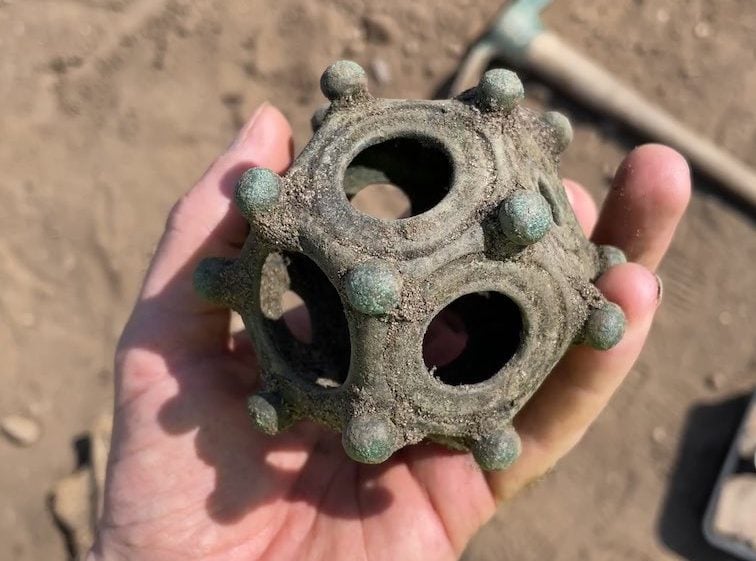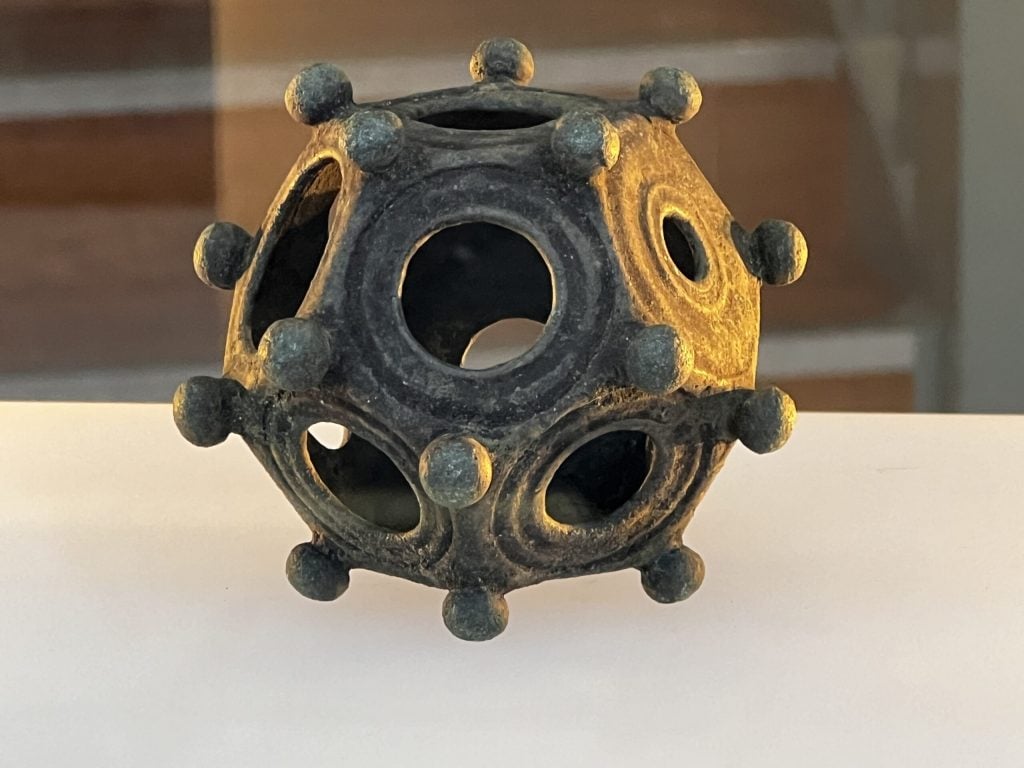Archaeology & History
Another Roman Dodecahedron Has Been Found, Flummoxing Experts
No known art or text clarifies how these objects may have been used.

The Norton Disney History and Archeology Group was digging in a field near the village of Norton Disney in Lincolnshire, England last summer when one of the volunteers stumbled upon a Roman dodecahedron. The unexpected discovery took place towards the end of a two-week search for ancient coins and broaches.
“It’s in an excellent condition—considering it’s been buried for 1,700 years,” group secretary Richard Parker said of the dodecahedron, a small, hollow object made from copper alloy and consisting of 12 pentagonal sides with circular cutouts at their center and studs on each corner.
It’s not the first of its kind—over 30 dodecahedra have been discovered in the UK alone, many of them fragmented or damaged. But while these oddly shaped artifacts show up rather frequently in Rome’s archeological record, no one knows what they were used for.
Because there are no surviving visual or textual references to dodecahedra, archeologists can do little except speculate. Some believe that the objects may have functioned as measuring devices or calendars, while others think they were used as weapons or tools, possibly for knitting.

The dodecahedron, discovered in the Midlands in the U.K., on display at the National Civil War Centre, Newark Museum. Photo: Norton Disney.
The members of the Norton Disney group are not convinced. “A huge amount of time, energy and skill was taken to create our dodecahedron,” the group explains in a post published on its website, “so it was not used for mundane purposes, especially when alternative materials are available that would achieve the same purpose.”
Instead, the group believes that the dodecahedra were used for “ritual and religious purposes.”
This isn’t unthinkable. For one, most dodecahedra show little to no sign of wear and tear from handling, suggesting their use was ornamental rather than practical. It would also explain why the objects, some of which date to the first century CE, are not mentioned by ancient sources: as a pagan symbol, any references to the dodecahedron could well have been erased from public records after Christianity became the Roman Empire’s official religion.





